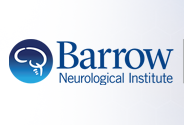Bone grafting and biologics for spinal fusion in the pediatric population: current understanding and future perspective
Document Type
Article
Abstract
Pediatric spinal fusions have been associated with nonunion rates of approximately 25%, putting patients at risk for neurological complications while simultaneously incurring significant costs for revision surgery. In an effort to decrease nonunion rates, various bone grafts and biologics have been developed to increase osseous formation and arthrosis. The current gold-standard bone graft is autologous bone taken from the iliac crest or ribs, but this procedure is associated with significant morbidity and postoperative pain due to an additional graft harvesting procedure. Other bone graft substitutes and biologics include allografts, demineralized bone matrix, bone morphogenetic protein, and bioactive glass. Ultimately, these substitutes have been studied more extensively in the adult population, and there is a paucity of strong evidence for the use of these agents within the pediatric population. In this review, the authors will discuss in detail the characteristics of the various bone graft substitutes, their fusion efficacy, and their safety profile in this subpopulation.
Medical Subject Headings
Adult; Biological Products (therapeutic use); Bone Substitutes (therapeutic use); Bone Transplantation; Child; Humans; Ilium; Spinal Diseases; Spinal Fusion
Publication Date
6-1-2021
Publication Title
Neurosurgical focus
E-ISSN
1092-0684
Volume
50
Issue
6
First Page
E8
PubMed ID
34062508
Digital Object Identifier (DOI)
10.3171/2021.3.FOCUS2148
Recommended Citation
Letchuman, Vijay; Ampie, Leonel; Choy, Winward; DiDomenico, Joseph D.; Syed, Hasan R.; and Buchholz, Avery L., "Bone grafting and biologics for spinal fusion in the pediatric population: current understanding and future perspective" (2021). Neurosurgery. 2167.
https://scholar.barrowneuro.org/neurosurgery/2167


